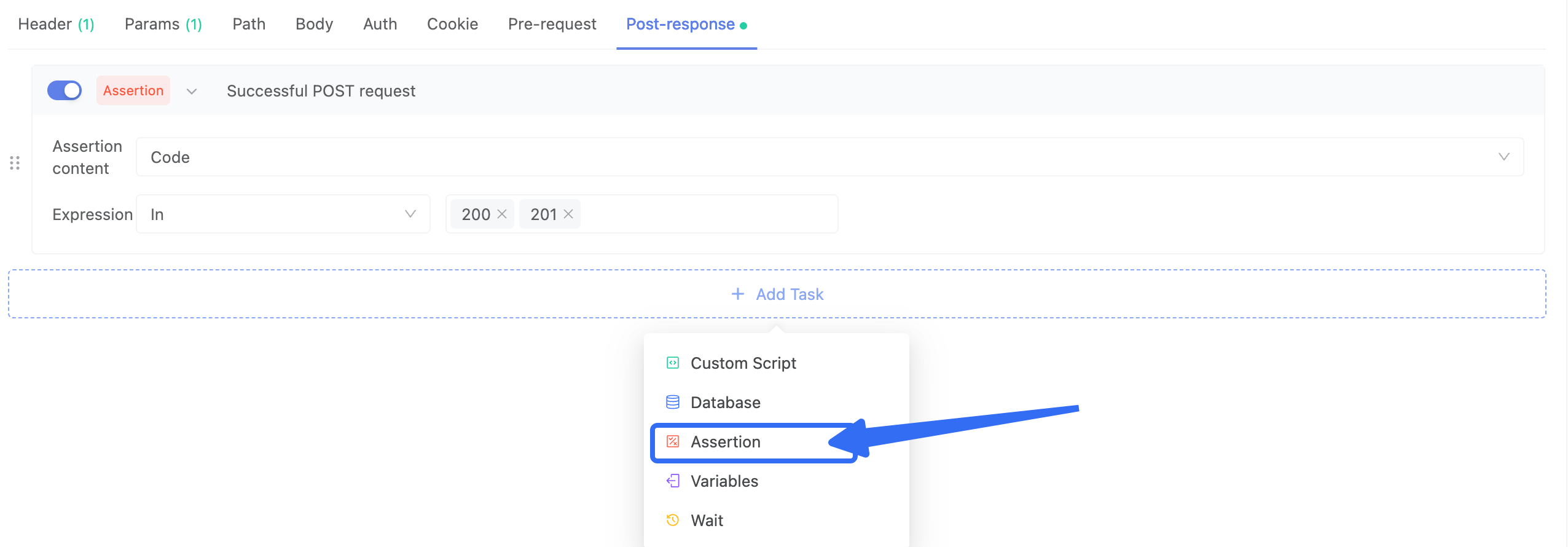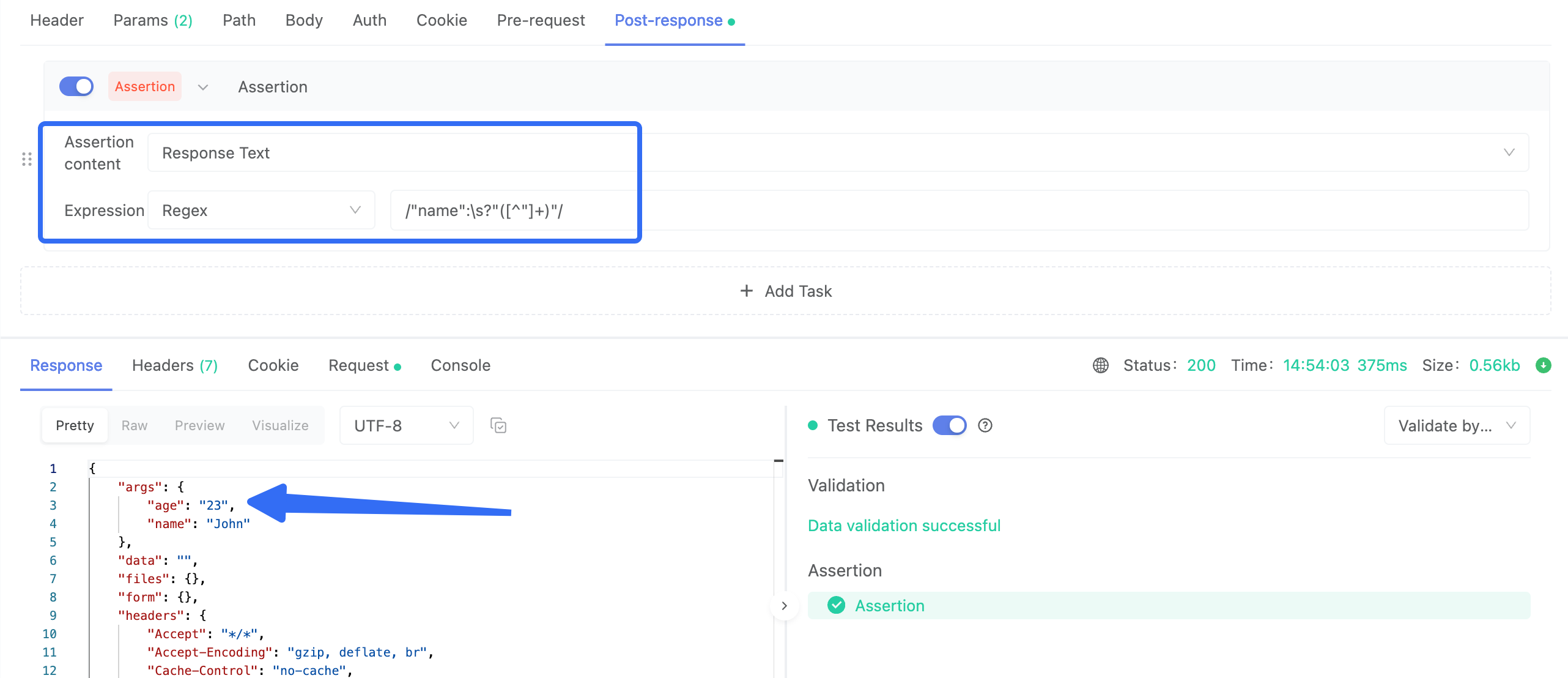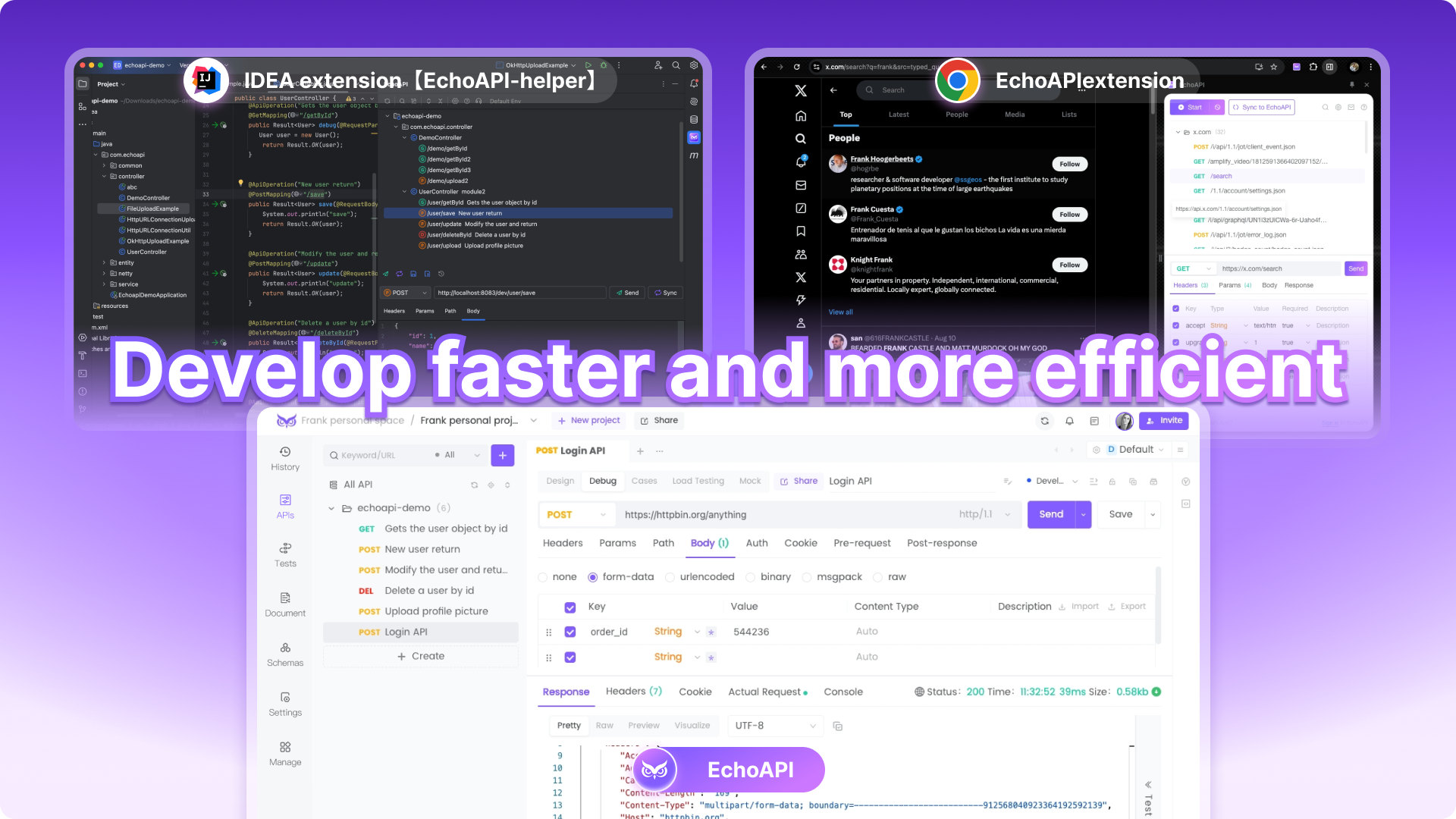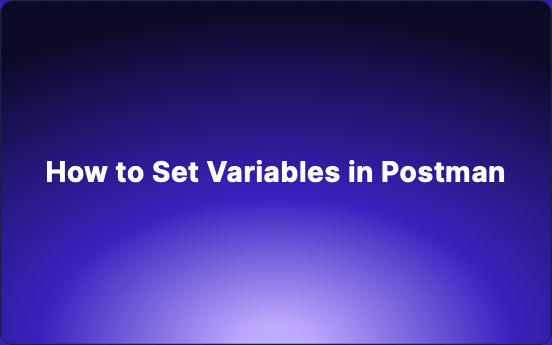How to Set Variables in Postman
How to Set Variables in Postman
Enhance the dynamism of your Postman tests by configuring variables within post-request scripts. Specific functions are required to effectively store data such as tokens, IDs, or response values.
This article delves into the nuances of leveraging Postman's scripting capabilities to configure variables. It offers comprehensive guidance on utilizing the pm.environment.set() and pm.globals.set() functions to establish and regulate variables across various scopes. Through practical examples, it demonstrates how to extract data from API responses and assign it to variables for subsequent utilization in test scenarios.

What’s the Post-Request Scripts?
Post-request scripts consist of JavaScript snippets that run after Postman sends a request and receives a response. They offer a robust method to engage with response data, conduct assertions, extract information, and manipulate data for subsequent requests.
Fundamentally, they enable the automation of diverse testing and data manipulation tasks within the Postman environment.
Comprehensive Tutorial: Setting Variables in Postman Post-Request Scripts
Step 1 - Accessing the Post-request Script Tab:
To begin, open the desired API or request for editing, and navigate to the Scripts tab where the Post-response section is located.
Step 2 - Extracting Data from the Postman Response:
Utilize the pm.response.json() or pm.response.text() methods to retrieve the API response body in JSON or text format, respectively.

Additionally, implement any necessary JavaScript object or string manipulation techniques to extract the targeted data.
Step 3 - Setting the Variable:
Utilize either pm.environment.set(), pm.globals.set(), or pm.collectionVariables.set() to save the extracted data into a variable based on the desired scope.
Example of Setting a Variable within Postman's Post-Request Script
pm.test("Set a variable", () => {
const jsonData = pm.response.json();
const token = jsonData.access_token;
pm.environment.set("auth_token", token);
});
This code snippet retrieves the access_token from the JSON response and saves it in an environment variable named auth_token.
Additional Tips
- Error Handling: Implement error handling mechanisms to ensure graceful handling of unexpected response formats or missing data, thereby maintaining system stability and reliability.
- Data Types: Confirm the precise data types of variables using the
typeofoperator, essential for data validation and maintaining integrity. - Variable Access: Easily access and reuse variables in consecutive requests by enclosing them in double curly braces, e.g.,
{{auth_token}}, simplifying dynamic data management. - Coding Standards: Choose descriptive variable names and organize scripts logically to enhance code readability and facilitate collaboration.
Benefits of Setting Variables in Postman Post-Request Scripts
Dynamic Test Data
Real-time Data Capture: Collect and retain dynamic data, such as IDs, tokens, and timestamps, from API responses for immediate use in following requests, enabling seamless data flow and integration.
Data-Driven Approach: Bolster test reliability by leveraging actual system data in place of predetermined static values, reflecting real-world scenarios more accurately.
Test Data Reuse
Efficiency: Optimize testing workflows by reusing captured data across various requests within a collection or environment. This approach minimizes the need for manual data input, reduces potential errors, and increases overall efficiency.
Data Correlation: Boost test precision by establishing connections between dependent requests. By passing data from one response to another, you can ensure that related requests are accurately linked, enhancing the reliability and accuracy of your testing process.
Test Maintenance
Flexibility: Enjoy seamless test updates by effortlessly modifying variable values without the need to change multiple request bodies. This flexibility greatly simplifies the process of adapting tests to different scenarios or requirements.
Data Centralization: Enhance test data management by storing it in a centralized location, such as environment or global variables. This approach ensures easy access, consistency, and efficient reuse of data across multiple tests, improving overall testing efficiency and reliability.
Complex Test Scenarios
Advanced Data Manipulation: Before saving captured data as variables, you can process and modify it as needed, allowing for complex test scenarios and intricate logic to be executed smoothly.
Conditional Testing: Utilize variables within conditional statements to dynamically control the test flow based on the data received in responses. This flexibility ensures that tests can adapt to various outcomes, improving the reliability and effectiveness of the testing process.
Collaboration
Collaborative Data Sharing: Facilitate team collaboration by sharing environment or global variables, ensuring that all team members have access to the same consistent test data. This approach promotes unity and avoids discrepancies in testing.
Multiple Environment Support: Set up different environments, each with its own unique set of variable values, to cater to a wide range of test scenarios. This flexibility allows for comprehensive testing across various conditions and configurations.
Common Applications of Setting Variables in Postman's Post-Request Scripts
Using variables in Post-request scripts of Postman is a flexible and useful technique in API testing. Some common scenarios include:
- Authentication Token Management: Efficiently extract access tokens from authentication responses and securely store them for use in future requests, streamlining the authentication process.
- Dynamic Data Handling: Seamlessly capture and retain dynamic data, including user IDs, order numbers, or session IDs, for precise test data correlation, enhancing the accuracy and reliability of testing.
- Data-Driven Testing: Dynamically generate test data and conveniently store it in variables, enabling efficient iterative testing and improving the quality of test coverage.
- Error Handling: Effectively capture and retain error messages or codes for deeper analysis and comprehensive reporting, facilitating prompt issue resolution.
- Performance Testing: Precisely measure and record response times for detailed performance analysis, helping to identify bottlenecks and optimize system efficiency.
- Chaining Requests: Smoothly pass data from one request to another, allowing for the creation of complex test flows and ensuring end-to-end system integrity.
- Environment Management: Conveniently store and manage environment-specific configurations, such as base URLs or API keys, simplifying the testing process across multiple environments.
- Test Data Generation: Efficiently create random or sequential data for test cases, providing a diverse range of test scenarios and ensuring comprehensive testing.
- Custom Logic Implementation: Flexibly apply custom logic based on response data, enabling conditional execution, data transformations, and other advanced testing scenarios to meet specific needs.
Echoapi - Visual Assertion and Extraction
EchoAPI is a versatile API tool designed to streamline the testing process with its advanced features, including visual assertion and extraction capabilities. These features enhance the testing experience by providing users with intuitive ways to validate responses and extract relevant data efficiently.


Key Features:
- Visual Assertion: EchoAPI offers a visual assertion feature that allows users to visually inspect and verify API responses. With color-coded indicators and graphical representations, users can easily identify the success or failure of assertions, ensuring quick and accurate validation of API responses.
- Extraction Functionality: The tool provides robust extraction functionality, enabling users to extract specific data elements from API responses. By defining extraction rules or using regular expressions, users can capture and store extracted data in variables for seamless data transfer and reuse in subsequent test steps.
Advantages and Characteristics:
- Enhanced Testing Efficiency: EchoAPI's visual assertion and extraction capabilities streamline the testing process, enabling users to perform thorough validations and extract necessary data with ease.
- Improved Test Accuracy: The visual representation of assertions and the precise extraction of data enhance the accuracy of API testing, reducing the likelihood of errors and ensuring reliable results.
- Flexible Data Handling: The tool's extraction feature allows for dynamic data extraction, facilitating data transfer between test steps and supporting complex test scenarios with ease.

Conclusion
By mastering the art of setting variables in Postman's post-request scripts, you have gained a powerful asset for optimizing your API testing process. The ability to capture and store dynamic data from responses allows you to build stronger, more efficient, and longer-lasting test suites. With careful consideration of variable scopes and skilled data extraction techniques, you can significantly boost your testing capabilities and speed up development cycles.
Remember, achieving success depends on understanding your API's behavior, planning your test cases strategically, and making the most of Postman's scripting capabilities. By following the guidance provided in this article, you'll be ready to harness the full potential of variables and elevate your API testing efforts to new levels.




 EchoAPI for VS Code
EchoAPI for VS Code

 EchoAPI for IntelliJ IDEA
EchoAPI for IntelliJ IDEA

 EchoAPl-Interceptor
EchoAPl-Interceptor

 EchoAPl CLI
EchoAPl CLI
 EchoAPI Client
EchoAPI Client API Design
API Design
 API Debug
API Debug
 API Documentation
API Documentation
 Mock Server
Mock Server








